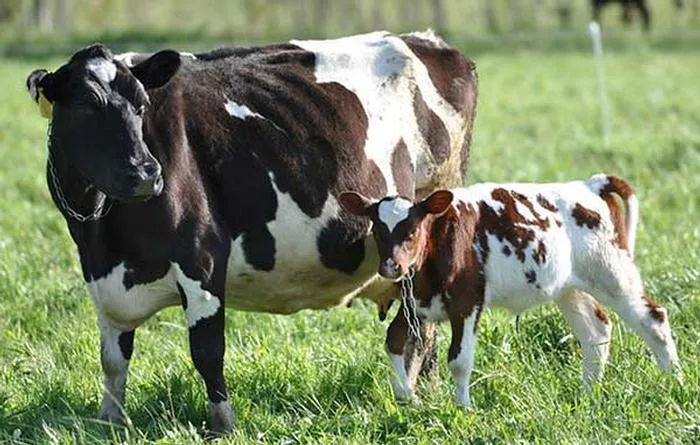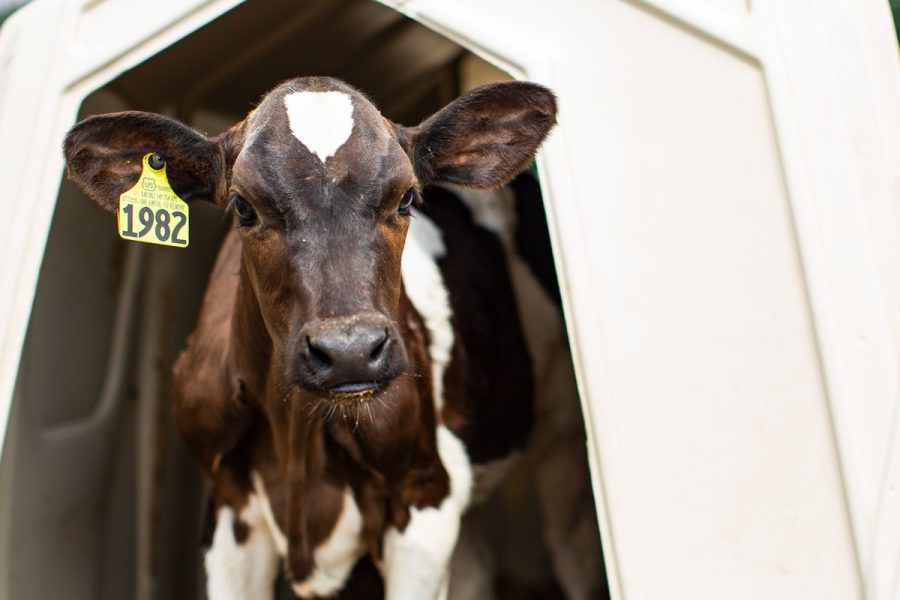Learn how phytochemicals can improve dairy cow health and performance during the transition period. Can plant-based solutions make your herd more productive?

The transition period, spanning three weeks from pre-calving to peak milk production, is a pivotal phase in dairy cows’ lives. It’s a time when their future health, production, and successful reproduction are determined. Dairy producers, well aware of the numerous challenges this period poses, including environmental, nutritional, and physiological aspects, understand that the success of their operation hinges on effectively managing these difficulties.
Among the main difficulties experienced during the transition period are:
- Diet and nutrient intake adjustments
- Environmental stressors like heat or cold stress
- Changes in housing or pen environments
- Increased metabolic demands due to the onset of lactation
A smooth transition depends on environmental management and nutrition. Proper forage, focused supplements, and careful environmental control minimize stress and support metabolic and endocrine systems. Dairy farmers always want better results, so knowledge of these elements becomes essential. The transition period marks a make-or-break event rather than only a phase. Good management during this period can result in notable increases in general herd health and milk yield.
Let’s delve into the significant role phytochemicals can play during the transitional phase. These plant-based chemicals, often overlooked, can provide dairy cows with substantial benefits. By harnessing these natural interventions, dairy farmers can equip themselves with the tools to enhance the health, efficiency, and performance of their herds, thereby promoting more sustainable and profitable dairy farming methods.
Mitigating Transition Period Stressors: Keys to Health and Productivity
During the transition period, dairy cows face a multitude of stressors that can significantly impact their production and overall health. These include pen movements, changes in stocking density, adjustments in ration, and variations in environmental conditions such as heat, cold, ventilation, and bedding.
Pen movements upset social hierarchies and induce stress that influences the immune system and endocrine function. Regular relocations can change cortisol levels, so influencing general metabolic processes.
Stocking density is quite essential. Overcrowded pens cause resource competition, which raises stress levels and reduces immune system response, increasing cow susceptibility to infections and nutrient absorption problems.
Essential for meeting nutritional needs, ration adjustments can upset the digestive system if not closely controlled. Diet changes taken suddenly can cause metabolic problems, including acidosis, which reduces nutrient absorption and influences endocrine and immune systems.
Environmental changes, including temperature and variations in ventilation, impact cow physiological states. While cold stress raises energy demands, straining metabolic resources, heat stress reduces feed intake and milk production. Inappropriate bedding and bad ventilation can cause infections and respiratory problems.
These pressures cause a cascade of physiological problems that influence hormone levels vital for metabolic and reproductive processes, making the immune system more susceptible to diseases. Compromised metabolic processes lead to reduced milk yield and poor health effects.
Effective management techniques are not just beneficial, they are crucial. By reducing pen movements, optimizing stocking density, carefully managing ration changes, and controlling environmental conditions, dairy producers can directly influence their cows’ endocrine and immune systems. This control guarantees improved nutrient metabolism and general health during the transition period, empowering dairy producers to steer their herd toward better health and productivity.
Exploring the Wonders of Phytochemicals in Dairy Cattle Health
Phytochemicals stand out when considering plants for purposes beyond forages. Including essential oils, flavonoids, and tannins, these are known in the dairy world as plant-bioactive components, plant extracts, or photogenic molecules. Herbs with medicinal properties have long been prized: lavender, ginger, and chamomile. Recent studies have focused primarily on the advantages of these phytomolecules for dairy cattle health, especially during the critical transition period.
Balancing Inflammation and Metabolism: Key Strategies for Transitioning Dairy Cows
The key for dairy cattle experiencing physiological changes is maintaining a balanced inflammatory response and good metabolism throughout the transition period. Unchecked inflammatory reactions can cause metabolic problems that compromise immune system function. This time, marked by calving and the beginning of lactation, biological systems must be finely tuned to produce the best milk.
In this sense, strategically planned dietary programs are vital. By guaranteeing enough nutrient intake and providing the energy, proteins, and minerals required for metabolic activities and tissue repair, they help prevent a negative energy balance and minimize inflammation.
Moreover, thorough management strategies to lower stressors aggravating inflammation and metabolic problems are crucial. Effective practices include minimizing pen movements, optimizing stocking density, and furnishing comfortable environmental conditions, including appropriate ventilation, temperature control, and quality bedding. These steps help the endocrine and immune systems, improving the metabolism of nutrients.
Dairy cows can flourish during the transition period through the synergy between exact nutritional strategies and rigorous management, fostering health, productivity, and good lactations. This method lays a solid basis for their lactation cycle and lowers sensitivity to metabolic and infectious diseases.
Harnessing the Power of Specific Phytochemicals: Antioxidants, Appetite Stimulants, and Metabolic Enhancers
During the transition period, specific phytochemicals have great benefits, especially because of their antioxidant properties, appetite stimulation, and metabolic-boosting action. Thyme, clove, and cinnamon extracts, especially known for their great antioxidant qualities, help lower oxidative stress and support general cow health.
Vanilla and fenugreek extracts show great potential to increase appetite. These extracts increase feed intake, ensuring dairy cows satisfy their dietary needs during the vital transition period.
Capsicum extracts are particularly remarkable for enhancing dairy cow metabolic state. These extracts improve the availability of glucose for milk synthesis, supporting a better energy balance and general metabolic condition.
The Bottom Line
Integrating botanical extracts into herd management plans presents a significant opportunity to enhance cow health and output as the dairy industry evolves. With the growing body of scientific research and field experience, understanding the specific modes of action of these phytochemicals is crucial. By collaborating with your nutritionist, you can develop tailored plans that leverage the benefits of these natural compounds to meet the unique needs of your herd. This collaborative approach not only supports optimal dairy cow health and performance but also contributes to the development of sustainable and efficient dairy farming practices.
Key Takeaways:
Understanding the role of phytochemicals during the transition period can significantly help improve the health and performance of dairy cows. Here are the key takeaways:
- Proper forage species, varieties, and management are crucial for building a targeted nutrition program that supports a smooth transition period.
- Farm management must address various stressors around the transition period, including pen movements, stocking density, ration changes, and environmental changes.
- Working with springing heifers and cows requires special attention to meet their genetic potential, promoting their health and productivity.
- The transition period, from 21 days pre-calving to peak milk production, is critical for dairy cows, affecting health, production, and reproduction.
- Phytochemicals, including essential oils, flavonoids, and tannins, offer potential benefits such as antioxidant properties, appetite stimulation, and metabolic enhancements.
- Reducing stress, ensuring adequate feed intake, and minimizing negative energy balance are vital goals during the transition period.
- Research shows that plant extracts like thyme, clove, cinnamon, fenugreek, vanilla, and capsicum have specific roles in improving dairy cow health and performance.
- Phytomolecules can help better manage glucose allocation in cows, enhancing milk production without negatively impacting their glucose levels.













